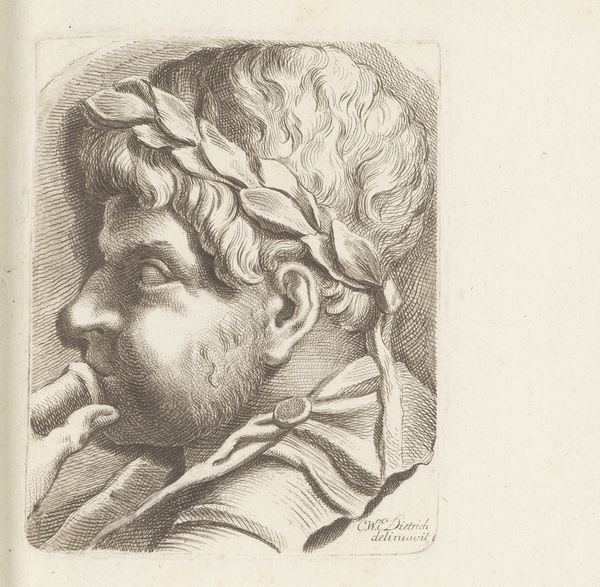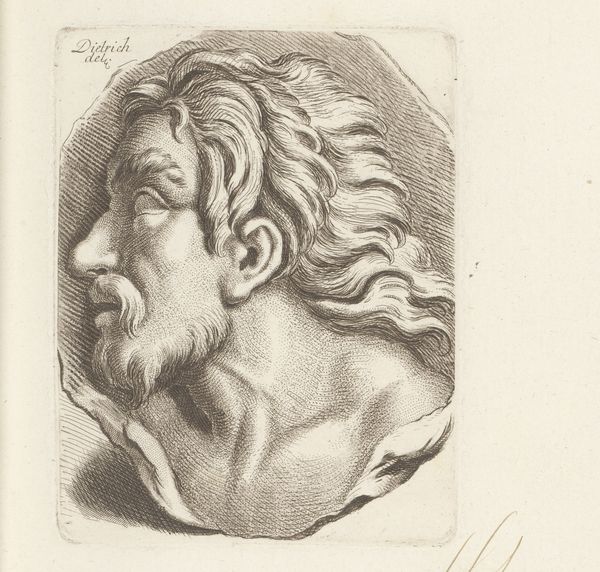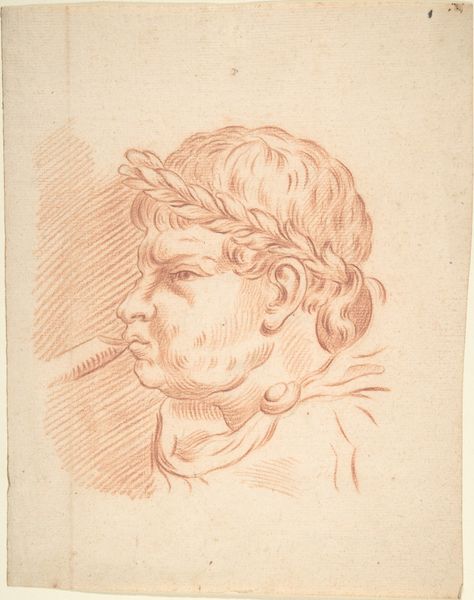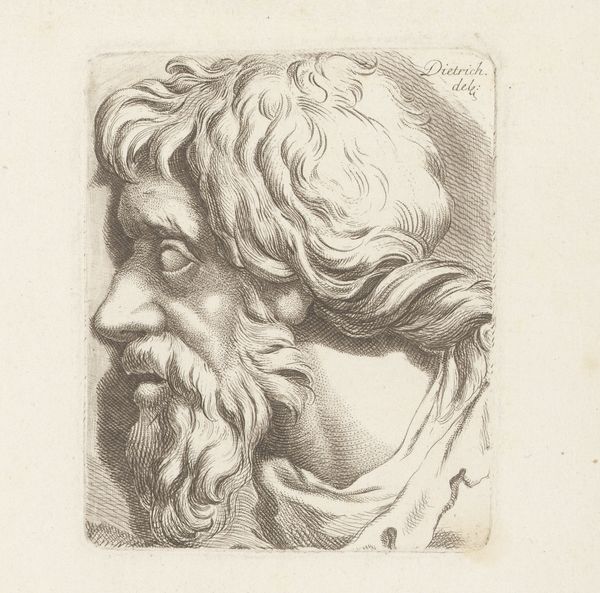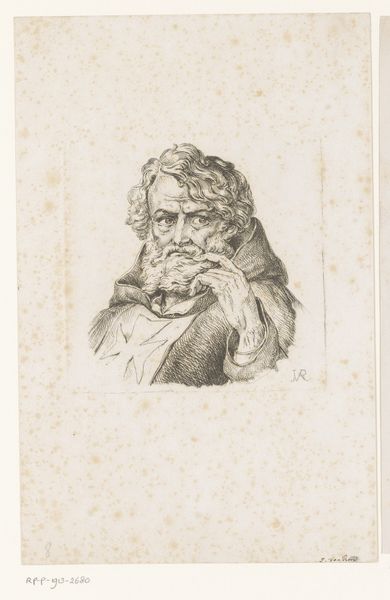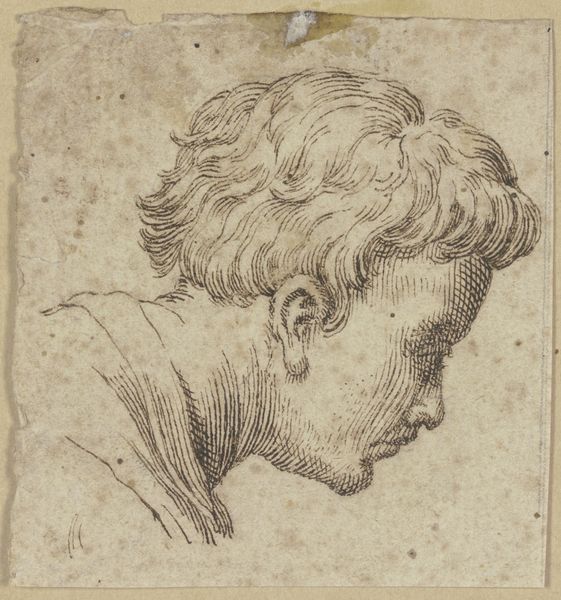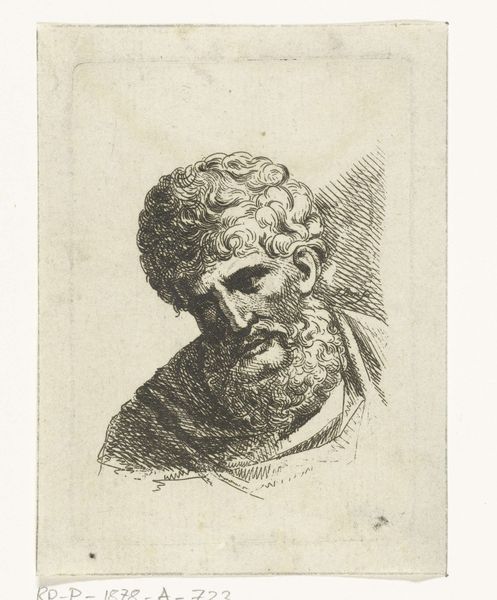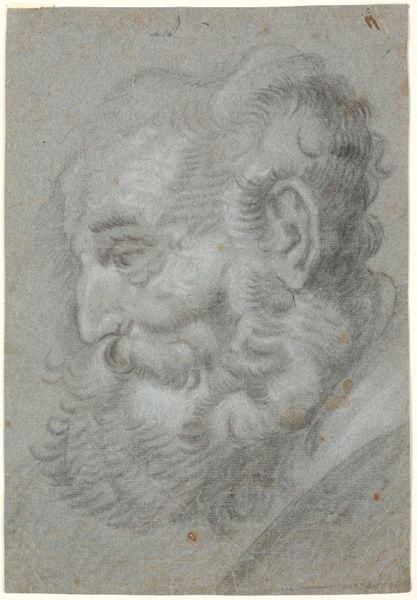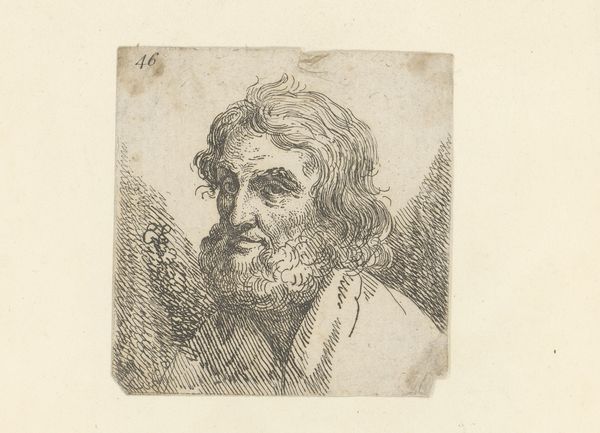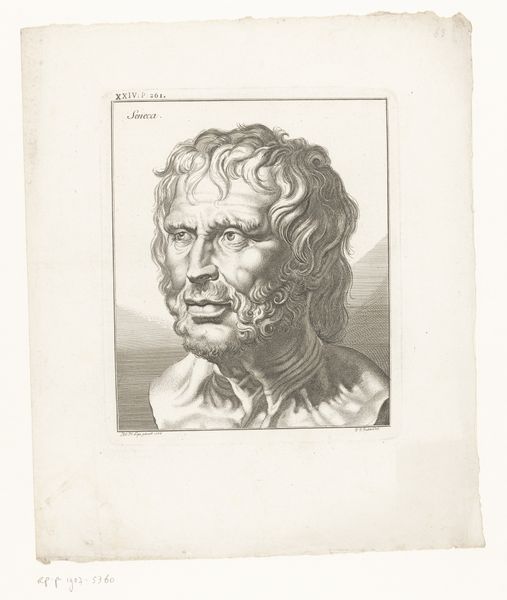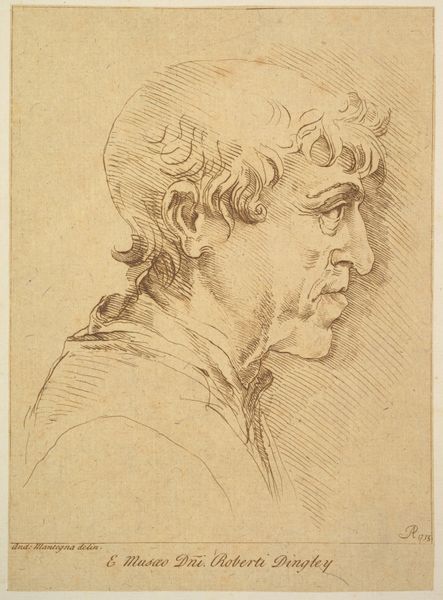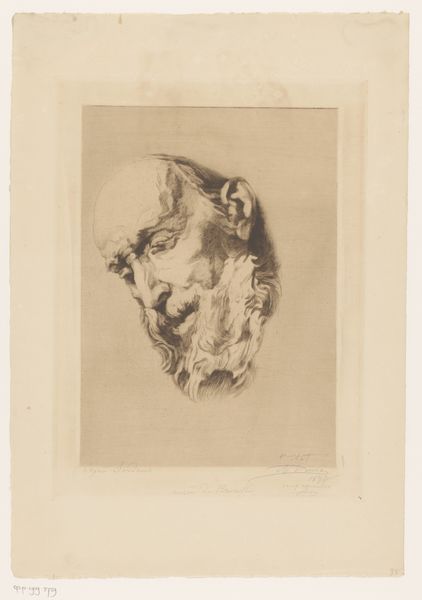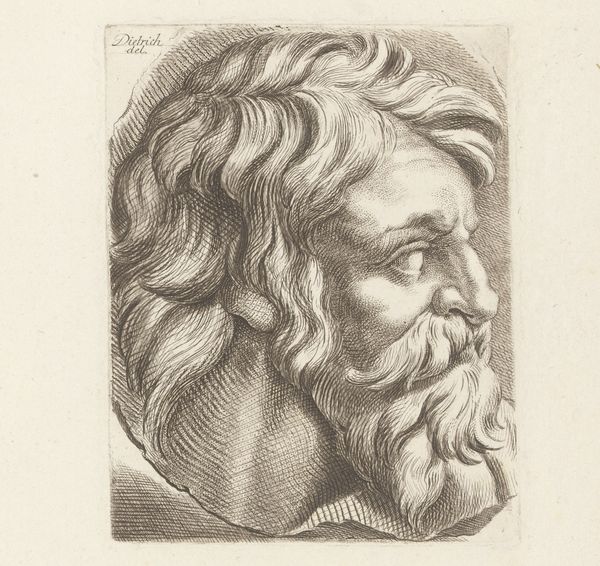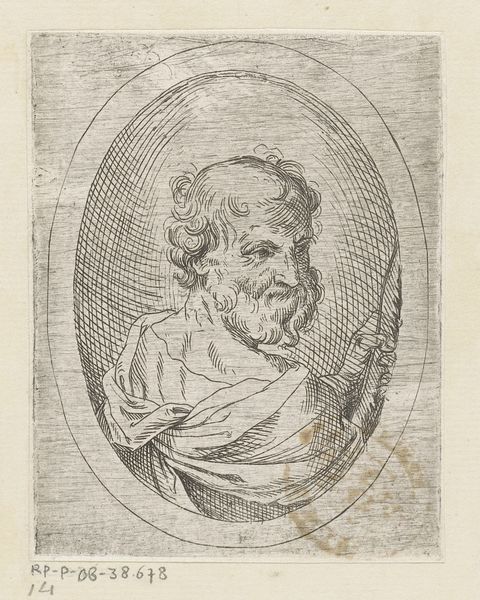
print, engraving
#
portrait
#
neoclacissism
# print
#
figuration
#
classicism
#
history-painting
#
academic-art
#
engraving
Dimensions: height 108 mm, width 84 mm
Copyright: Rijks Museum: Open Domain
Curator: This is Carl Friedrich Holtzmann’s print, “Head of an antique sculpture with laurel wreath,” dating from around 1750 to 1811. Editor: My first impression is contemplation. The subject is a neoclassical head of a man, rendered in exquisite detail. His brow is furrowed, finger to his lip. The delicate laurel wreath seems almost secondary to his thoughtful pose. Curator: Absolutely. The neoclassical movement, of which Holtzmann was a part, looked to classical antiquity for inspiration, particularly in its art and politics. Think of the Enlightenment, of course, which prized reason and order. Prints like this served an important public role. Editor: How so? Curator: Well, these images made classical sculpture accessible. They allowed people who could not visit the great collections to engage with the artistic and philosophical ideals of antiquity, thus fostering a connection to a historical narrative laden with power and intellectualism, often explicitly for the benefit of social elites. The wreath is a visual cue about leadership and triumph. We have to consider who was viewing and using these images. Were they male? Educated? Of what class? Editor: It’s a very powerful statement when framed through the lens of contemporary social theory. How images like these reinforced existing social hierarchies... almost a form of early propaganda disseminated through artistic channels. The subject embodies ideals of leadership, and you're right, his gaze directs this toward a particular kind of viewer, excluding others. It wasn’t simply art; it was a social project. Curator: Precisely. Art historians should also address the institutional and societal structures that enabled Holtzmann to create and distribute this engraving, not to undermine his talent, but to contextualize his agency. The engraving process itself – how does this influence how his art was interpreted? What was the market like for prints like these? Editor: Right, that adds critical texture. I am now wondering how such art would be regarded from other socio-political angles, and how we should interrogate historical views. Curator: Holtzmann’s work speaks volumes about the art world of the period. Editor: A potent piece reflecting historical and political realities!
Comments
No comments
Be the first to comment and join the conversation on the ultimate creative platform.
